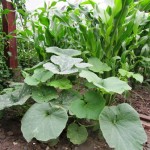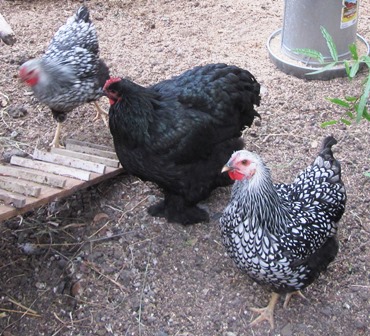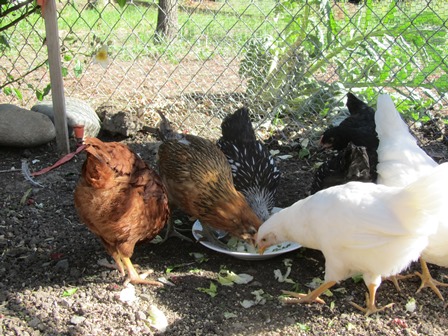Svalbarg–Protecting Seed Diversity for Our Planet
If you’ve ever saved your favorite food crop seeds from one year to the next and then lost them because of flooding or storage failure, you might feel disheartened. But a cataclysmic loss of seed diversity for food crops in certain parts of the world could mean starvation for millions.
Roughly 1,750 genetic seed banks have been established around the globe to save seeds and preserve agricultural plant diversity. But many banks are vulnerable to threats such as war and civil strife, lack of funding, man-made and natural disasters, equipment failures, mismanagement, and other factors.
Established to protect diverse seed collections against catastrophic loss, the Svalbarg Global Seed Vault (SGSV) is a long-term backup storage facility for the world’s 1750 seed banks.
The SGSV houses millions of diverse seeds for food crops. However, Norwegian law prohibits the facility from storing genetically modified seed.
The Svalbarg Global Seed Vault is located inside a mountain on a remote island in the Svalbarg archipelago off the coast of Norway. The island is situated halfway between the Norwegian mainland and the North Pole.
Climate change affects the environment and ecosystems supporting agricultural food crops. Crop diversity underpins food stability and security.
Rising populations along with changing environments and diminished resources are global challenges the world is facing. A secured food supply is necessary to end hunger. Gene banks and seed saving trusts help maintain genetic diversity and ensure greater resources for all of humankind. (See, https://www.croptrust.org/resources/)
Civil strife and war have resulted in the loss of many seed banks throughout the world. In 2015, the first withdrawal of seed from the vault was made by Syrian researchers after the bombing of Aleppo destroyed their seed bank. Some seed banks like that of Iraq and Afghanistan have been completely lost.
To take a tour inside the Svalbarg vault, go to, http://www.sciencealert.com/watch-inside-the-doomsday-seed-vault-in-svalbard.
_______________________________________________________________________________________
If you enjoy reading about environmental and farming topics, check out my Henny Penny Farmette cozy mysteries. Besides a mystery, they include helpful tips about heirloom gardening, caring for fruit and citrus trees, keeping chickens and bees, and delicious farm-to-table and canning recipes. For more information, click on the URLs.

Abby stirs up a New Age cult as she searches for clues into the murder of Fiona, her free-spirited friend

The book that launched the Henny Penny Farmette series in which Abby investigates the murder of her town’s celebrity pastry chef
Chicken Bad Behavior–Best Nipped in the Bud
Many factors can affect the health and egg laying of your chicken flock, including weather, housing, size of population, breed, molting, parasite load, and nutrition. But when chickens start viciously pecking other hens or eating eggs, the underlying issues must be addressed.
Most often, the issue is a case of stress. Causes of chicken stress include overcrowding, excessive heat, too much bright light, lack of food and/or fresh water, and bad diet.
Other factors can include disruption of the pecking order by introducing new birds, especially those of other breeds (for example, fowl with combs and those without) or mixing old fowl with young. These factors all relate to flock management.
When birds start eating eggs (usually finding a cracked egg or broken ones, tasting them, and then pecking eggs to break them to eat) or viciously pecking on other hens, it’s best to figure out what in the hens’ environment is causing the stress. The causes must be eliminated.
For more tips on farming and beekeeping, plus delicious recipes, check out my newest mystery–A BEELINE TO MURDER. See, http://tinyurl.com/p8d6owd
Herbs to Flatter Vegetables, Flavor Meat, and Finesse Fertility

If you have limited space, use taller herbs like this lavender in your landscape and gr0w smaller plants like mint in pots
Herb gardens have always held a fascination for me. One of the many reasons I love growing herbs is the scent that many herbs release with bruising that can occur when you brush against plants such as bee balm, rosemary, or lavender.
Most herbs contain fragrant oils (verbena and lavender, for example) that are frequently used in the making of cosmetics. Many herbs reseed themselves, ensuring a perennial supply for medicinal and culinary uses.
For thousands of years, herbs have been added to food to enhance the flavors. In fact, many cuisines of the world are distinctly identifiable from herbs and mixtures of them added to the food. Imagine Italian marinara without the addition of basil in the tomato sauce; a French meat or vegetable dish without savory, fennel, sorrel, rosemary, or tarragon; or an English traditional dish without bay leaf, marjoram, garlic, or mint. Consider Greek food without rosemary, thyme, or arugula.
Herbs have been used to flavor vinegar, olive oil, and liqueur. Herbs even play a role in amorous arousal. In France, Verveine du Velay is a vervain-flavored liquer popular in Le Puy. It’s reputation is further enhanced by the popular ages-old perception of it as an aphrodisiac. According to author Jade Britton (The Herbal Healing Bible, Chartwell Books, Inc.), the herbs Siberian ginseng, damiana, and saw palmetto have been used in remedies to treat male infertility along with gingko for increased blood supply to the male sex organ. See, http://www.amazon.com/The-Herbal-Healing-Bible-Traditional/dp/0785829652
While many herbs thrive in well-drained, sunny positions in the garden, others do equally well in part sun/shade. For shade-tolerant herbs, plant the following.
Chives
Cilantro/Coriander
Garlic
Lovage
Lemon Balm
Mint
Oregano
Parsley
Sweet Woodruff
Thyme
You can grow herbs in a pot, a coffee can, a half wine barrel, window box, even an old wheel barrow. The point is that herbs are not too fussy. Some are so vigorous as to be considered invasive (mint, for example). So whether you seek the enhance the flavor of food, add pizazz to a meat dish, or to increase your stamina, libido, and overall health, maybe it’s time to plant your own herb garden and see what herbs can do for you.
 Facebook
Facebook Goodreads
Goodreads LinkedIn
LinkedIn Meera Lester
Meera Lester Twitter
Twitter









